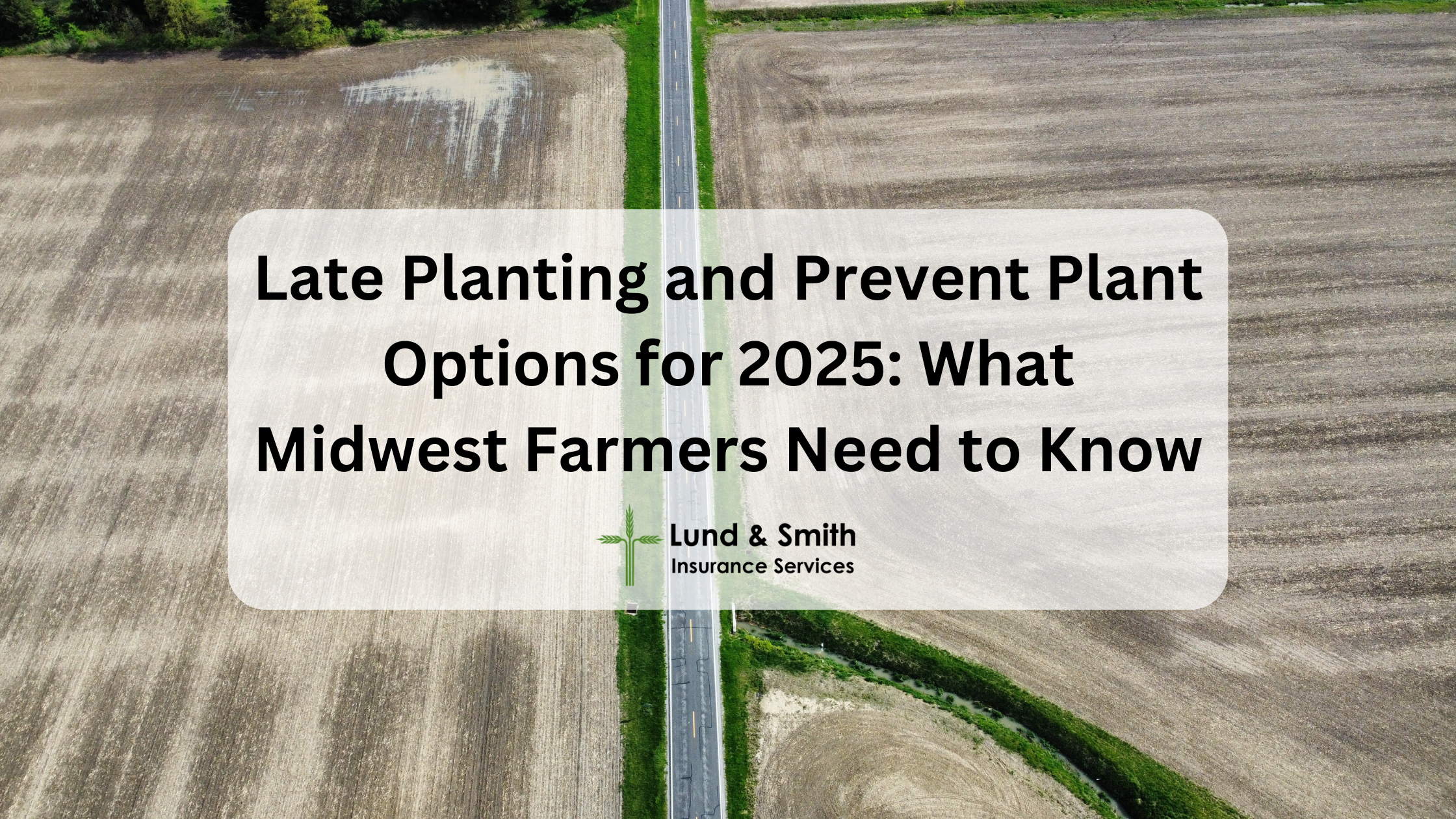Spring in the Midwest hasn’t exactly rolled out the red carpet for planting. Across Northern Ohio, Northeast Indiana, and Southern Michigan, farmers have faced a frustrating mix of excess moisture, cool soil temperatures, and limited planting windows. Fields have been slow to dry, and the calendar is moving faster than many would like.
If your planter hasn’t moved much yet—or if you’re watching the forecast more than the row units—it’s time to think about your options. Specifically: What happens after the final planting date for corn and soybeans?
Let’s walk through what late planting means for your crop insurance coverage, what adjustments might make sense, and how Prevent Plant may come into play if conditions don’t improve.
Final Plant Dates for Our Region
- Corn: June 5
- Soybeans (OH/IN): June 20
- Soybeans (MI): June 15
After these dates, your crop insurance revenue guarantee doesn’t disappear, but your guarantee begins to decrease 1% per day after the deadline.
Late Plant Period: What You Need to Know
Once the final plant date passes, you enter what’s called the Late Plant Period, which lasts:
- 20 days for corn
- 25 days for soybeans
You can still plant during this window, but with a 1% reduction in coverage per day on those late-planted acres.
Example:
If you plant corn on June 10, that’s 5 days late, and your Revenue Protection coverage would drop from, say, 80% to 75% on that acreage. This can significantly affect your revenue guarantee, especially in a year with tight margins.
What About Prevent Plant?
If weather continues to prevent you from planting—even during the late plant period—you may be eligible for a Prevent Plant (PP) claim. Prevent Plant exists to help you recover when planting simply isn’t possible due to extreme weather conditions.
Key PP Guidelines to Know:
-
PP Must Be Weather-Related: Not input delays, market decisions, or equipment issues.
-
Eligibility: PP acres are based on the greatest number of acres planted and insured in any one of the past 4 crop years per crop.
-
Your PP eligibility is reduced by the number of acres of that crop actually planted this year.
-
Coverage Rates: Standard Prevent Plant pays 55% for corn and 60% for soybeans of your revenue guarantee, unless you’ve purchased additional coverage (e.g., PF (Prevent Plant Plus Five) option adds 5% but has to be added to the policy by sales closing date, March 15th).
Eligibility Scenarios:
-
New farmers (first-year producers) can qualify if they filed an intended acreage report in March.
-
Experienced farmers picking up new land in a new county are eligible as new producers in that county, but only if they completed an intended acres report before planting season.
-
Experienced farmers who are newly insured or expanding into a new county without an intended acreage report are not eligible for PP.
-
New entities (LLCs or partnerships) inherit the crop insurance history of their individual owners.
What If I Plant a Second Crop?
If you file Prevent Plant and then plant a second crop, like soybeans after a PP corn claim, it changes your coverage in the following ways:
-
Your PP payment is reduced by 65%
-
A 60% yield of your APH is assigned to your records for the PP crop for the year (in our example above, planting soybeans on PP corn acres, 60% of your APH will be assigned to your corn database)
This can affect your future APH, so be sure to evaluate your long-term plans and talk through options with your agent.
What If I Plant a Cover Crop After Filing Prevent Plant?
Cover crops are a valuable tool for soil health and forage—but the rules matter.
Updated USDA/RMA Guidelines:
-
You can plant a cover crop at any time after filing PP
-
You can graze, hay, or harvest for forage (silage, haylage, or baleage) at any time—even before Nov. 1—without reducing your PP indemnity
-
If you harvest the cover crop for grain or seed, your PP payment is:
-
Reduced to $0 if the cover crop was planted before the end of the Late Plant Period for the PP crop
-
Reduced by 65% if planted after the Late Plant Period, and you’ll also receive a 60% yield assignment on your PP crop
-
In simpler terms:
✔ You can chop, graze, or feed it to cattle—even in July.
✘ You can’t harvest it for seed or grain without taking a payment reduction.
This flexibility is a great option for livestock producers, but the harvest method and timing are critical. Always talk with your agent before planting or harvesting a cover crop.
Split Fields? Let’s Talk First.
There are additional rules around split fields—where one portion is planted and another may qualify for PP. In some cases, these can be complicated by unit structure and acreage reporting requirements.
Bottom line: If you’re considering PP for only part of a field, don’t guess—talk it through with your agent first.
Final Thoughts: Let’s Work Through It Together
2025’s spring has been anything but predictable. Whether you’re evaluating when to plant, what to plant, or whether to plant at all—these decisions affect more than this year’s yield. They impact your insurance, your future APH, and your bottom line.
At Lund & Smith Insurance Services, we’re walking through these same decisions on our own farms—and we’re here to help you make the best ones for yours.
Reach out today if you’re considering Prevent Plant, switching acres, or have questions about your late planting options. We’re here to help you protect what matters most.

